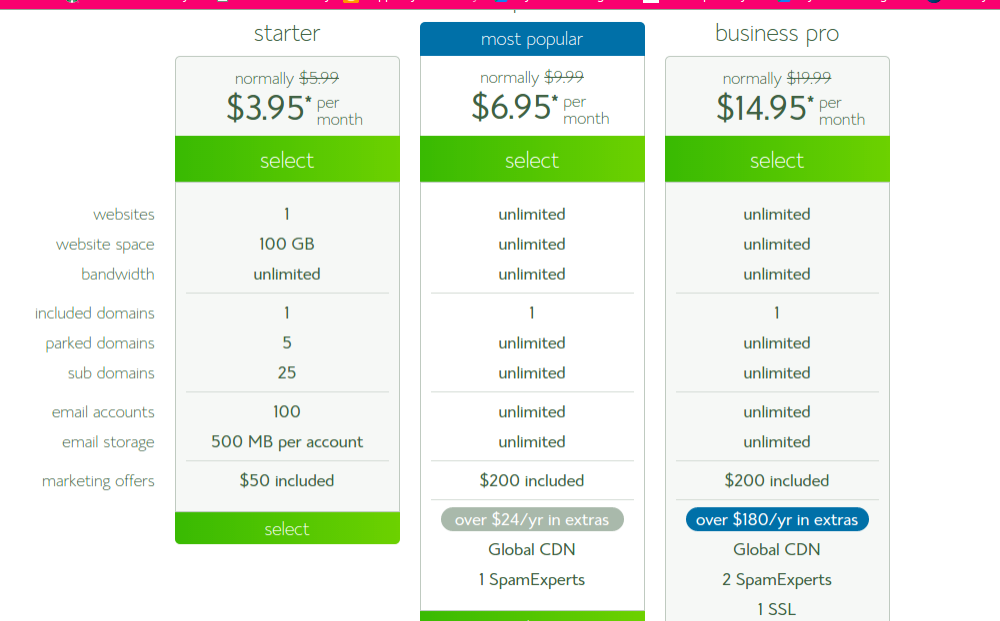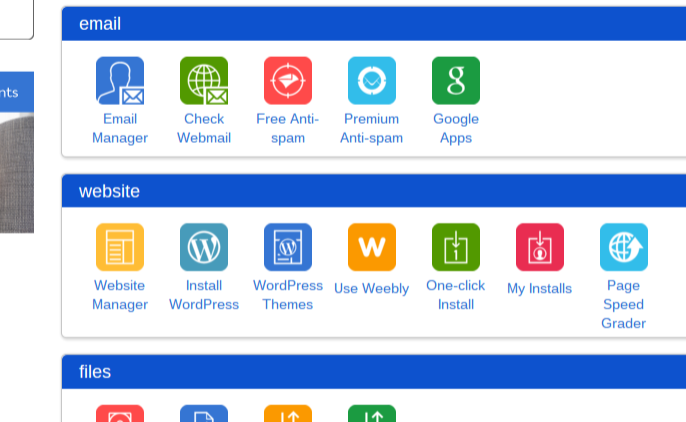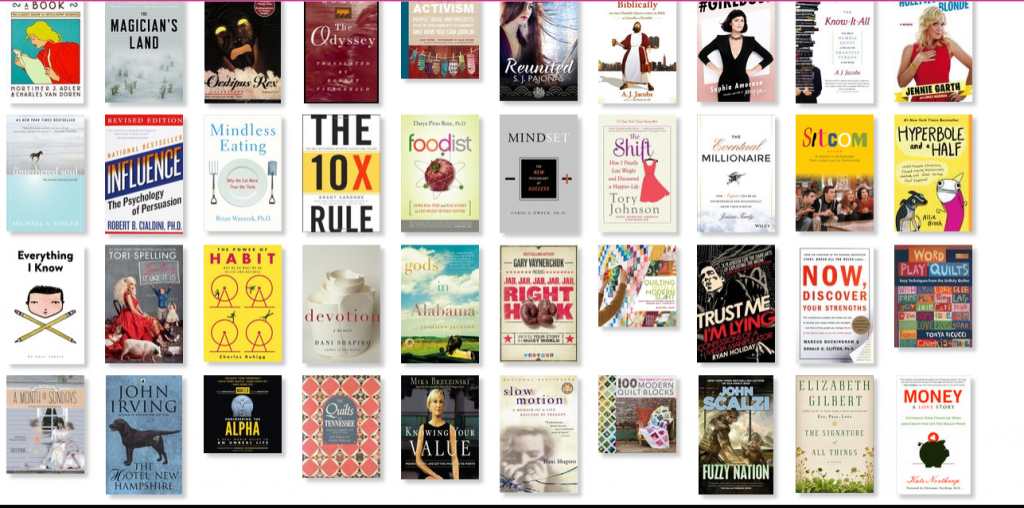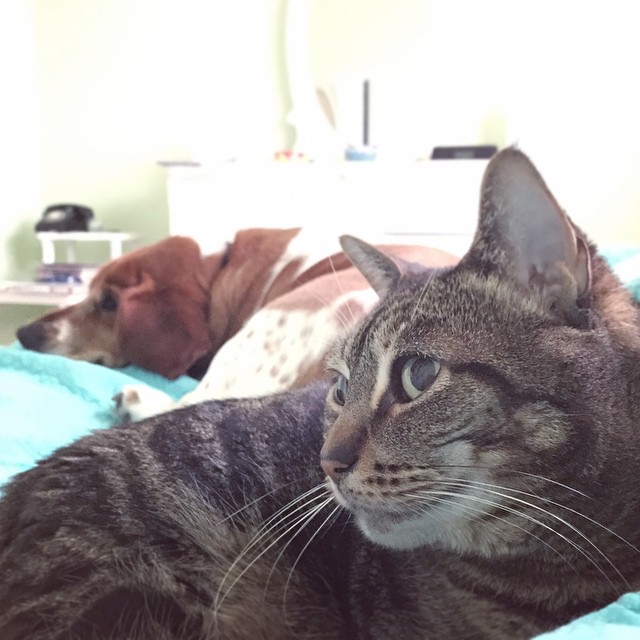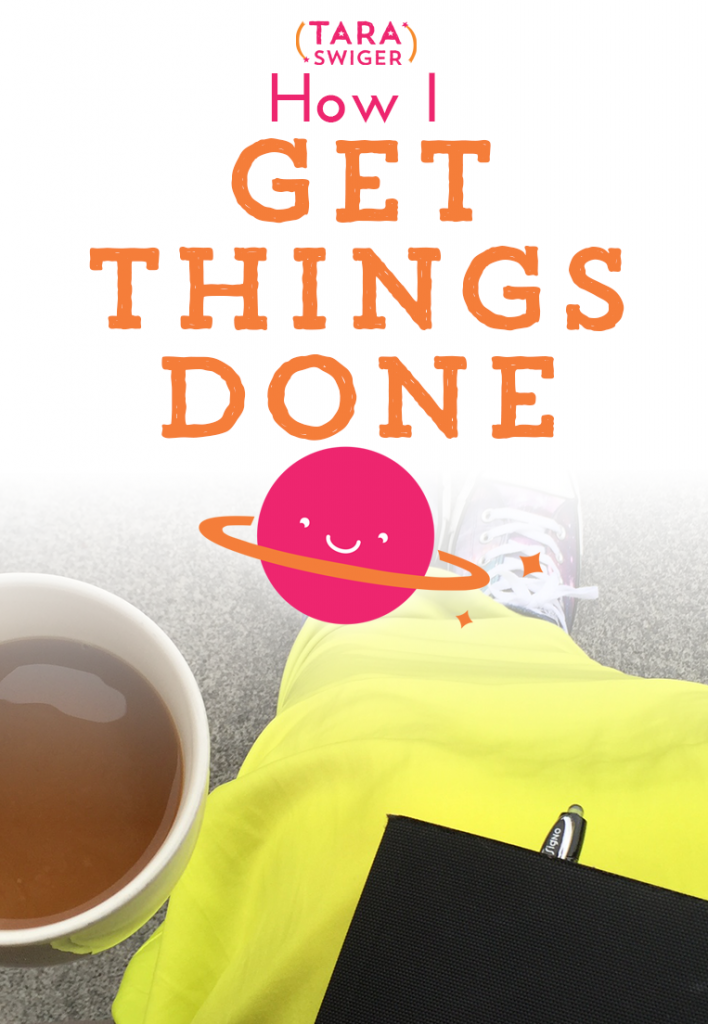
This is the second piece of the How to Get Stuff Done series. Find Part 1 here and tomorrow's podcast episode will be the final piece: How to build your own system for getting stuff done.
Warning: I am diving deep into how exactly I get things done – from producing a podcast every week to writing my book to creating 18 hours worth of class material. I'm sharing this as an example of how a system can work but please remember that you'll need to find the system that works best for you and your particular tasks.
If you need to make your own system, join us for Wrangle Your Time, where you'll learn how to put together a system that works for you.
Although it doesn't always feel like it, I get a lot done.
There are the every-week projects: this blog post, podcast episode, free lessons for subscribers, a new lesson for the Starship, answering questions in the Starship forums, holding the weekly Starship live chat, and working with 2-3 clients a week.
There are the quarterly projects: Opening the Starship, welcoming in members, writing new content for the launch, doing my own quarterly planning and taxes.
And then there are the one-time projects, (writing a new class, teaching live, writing articles for magazines, giving interviews) and my bigger goals that require me to work on something long-term (like a book proposal or creating everything (whew!) for Lift Off).
And then there's email. I have planning and project-detail emails from Jess, session notes from clients, questions from potential customers (“Is this for me?”), and compliments from readers and listeners (thanks!). I read and reply to absolutely every question or concern or even my-life-is-falling-apart email I get from readers, listeners and students.
I listed this because before I can share how I get things done, we have to talk about the different kinds of productivity I need. I need regular routines for getting the weekly stuff done and I need a separate, set-aside time to work on one-time requests and projects. I need internal-thinking time for writing (usually at the coffee shop) and quiet-house time for talking to clients (usually at home).
Above all, I need to NOT keep all these things in my head. When I don't have some way to write them all down and not lose them, or when I don't trust my system … I go crazy. My head swims. I can't sleep. I get swirly. (Swirly is when you just go over and over the same thing until everything is doom.)
How I remember everything I need to do
Here's what I did for the last 5 years of self-employment:
I keep everthing in a moleskine journal that fits in my purse. When someone recommends a book, I write it down. When I remember a project, I write it down. When I have an idea, I write it down.
Each Monday, I made a “This Week” list. I'd write down my weekly stuff plus all of the one-offs that are particular to this week. I'd look at all my ongoing projects and write down the tasks I wanted to get done this week to make progress. I'd go back through the last week in my journal and add anything to the list that I didn't get done, or that I wanted to remember. I'd check my calendar (Jess books client sessions and adds them to my calendar) and write down anything that's coming up (I keep all time-bound appointments in my google calendar, so it syncs on my phone and computer, but I also write them on my list so I remember to allow time for them). This fit on one piece of paper.
Each weekday, I'd look at the This Week list and write a list for today. I'd write down just the things I could get done today. In general, I worked on the weekly things on Monday or Tuesday (if at all possible), so that I can work on the bigger projects or one-offs later in the week, with a bigger chunk of uninterrupted time. This also ensures they always get done, and I stay consistent in my online connection. (Here's how I stay consistent with my social media presence.) If a day had a lot of tasks, I'd number the most important, so I remembered to focus on them.
The above system isn't that different from a Bullet Journal (which so many Starship Captains LOVE), except that I'm prioritizing daily, based on what's going on.
I've recently changed this system a bit, and here's what I do now:
If I have my phone near me, I put every To Do in OmniFocus. From adding a book to my To Read list, to remembering to mail letters, to writing this weekly post, I put it all in OmniFocus the moment I think of it. If I'm with someone else or my phone isn't nearby, I write it in my journal and add it to OmniFocus the next day.
Once a day, usually at the end of my workday before I start dinner, I go through the newly-added tasks and assign them “contexts”. Thanks to Sarah, I think of Contexts as the description of what state I'm going to be in when I work on the task.
I use:
- Home (little things around the house),
- Errands (when I'm out),
- Big Rocks (the tasks that will move my most important projects forward),
- Consistency (the things I do each week or month or quarter, I've set them to repeat automatically, so I add them once and they come back when I need to work on them),
- Quick and Painless (tiny things like “Finish filling out invoice”).
Contexts are harder to explain than they are to implement – I use them to ensure I'm working on the important things and that I know what I could do when I have a moment (other than scroll through Instagram for the 10000th time). While I'm going through them, I also apply a due date, if I want to be sure and do it by a certain date. Things with a due date (even if I made it up!) are FAR more likely to actually get done!
Each Monday I still make a This Week list in my journal by looking at what's coming up. I make sure that each piece of each project for the week is in OmniFocus, with a due date. This isn't really necessary, except that I find it clarifying to see everything I'm doing in a week in one place and it gives me a shape for my week. (For example, last week I had a live workshop on Monday that involved a total of 4 hours driving, and then had 2 clients sessions and a vet visit on Tuesday, so I knew I wouldn't do my normal writing days, so I'd need to write on Wednesday and Thursday.)
Each day, I look at my OmniFocus list for the day and pick the 3 Most Important Things for the day (learned this from ZenHabits). If I get nothing else done, I really need to do these. This helps me focus on what's important and it keeps me from getting distracted by the internet. As soon as those 3 MITs are done (sometimes it's done in an hour, sometimes they take all day), I check out my OmniFocus list for the day and start going down it, occasionally taking a break with a Quick and Painless task. (Today it was ordering protein powder from Amazon.)
That is how I remember to do everything, and remembering (and prioritizing) is half the battle when it comes to getting stuff done.
Actually DOING the things.
The most important piece to doing stuff is to HAVE A TIME to do it. Nothing will get done unless you set aside the time for it.
Side note: I cannot believe how many makers I've helped completely change their business growth by just doing one thing: Setting aside time for work. If you don't have a time set, do it. It will change your life. It doesn't matter if you have 1 hour a week or 8 hours a day, just set it aside and keep it sacred.
I work 4-5 weekdays (never on a weekend unless I'm traveling and teaching) from 9ish to 4ish. Before “work”, I take the dogs on a long walk, workout, shower, have breakfast, meditate/pray, set my intention for the day (pick my 3 MITs) and maybe read. I try very hard to only turn on the internet after all this, which ends up being between 9 and 10 am.
I have two main ways I think of my working time: Writing Time + Project Blocks. In between these are emails and quick tasks. Writing Time is mostly for the things I do every day or every week (writing free content) and Project Blocks are for doing one-off projects and making progress on my Big Goals.
Writing Time
I try to make my working time as much of a habit as possible, so I always sit down to write first (I try SO HARD to not check email before my writing time). If it's early in the week, I work on the Routine Writing. If the Routine Writing is done for the week (usually by Wednesday), I write on my bigger projects (paid writing gigs, guest posts, or my Big Goal project). I make sure to write first thing because this is when my brain is freshest. After I get to 1,000 words or have finished what I was writing, I stop writing and head to my email.
Email
When I check email, I catch up on it (remember, I use Unroll.me to keep all of my subscriptions in one place, so the only emails in my inbox are ones I need to take action on). I try very hard to just handle what's there, reply when needed, and file everything else. If the email is a reminder to do some specific action, I add it to my list and archive the email (so I can find it later if I need it, but so that my inbox does not become a To Do list in competition with my own To Do list).
Project Time
After email, it's Project Time. Often this involves client sessions, catching up on the Starship forum (I read every post there and answer any questions), editing what I wrote, planning my content calendar, creating a class, updating the site, researching, or scheduling social media. I try to have at least two or three Pomodoro sessions without email or distractions for Project Time.
Reality
Now the fact is that almost no week is “normal”. I teach classes all over North Carolina, which often involves a good bit of travel time. I occasionally have client sessions earlier in the day. If the Starship is Boarding, I'm in my inbox constantly – personally welcoming every new member as soon as they pay. Each quarter I set aside a whole day to plan the coming three months.
But thinking of my time in these two categories helps me be sure my week is balanced and I'm getting both time to write the consistent stuff and to work on the bigger projects. Before I started partitioning my time up like this, my weekly writing and emails were taking over every workday, ensuring I didn't get much done towards the bigger projects.
When it comes to actually focusing during the work time, I've got a few hacks:
- I find the most important thing for this very moment and either write it down or if it's already written down, I circle it, star it or do whatever it takes to say to my brain: work exclusively on this.
- If I find myself getting distracted (ex, the other day I suddenly really needed to look up this song), I set my Pomodoro timer and do nothing else during the next 25 minutes.
- I play music in my earbuds constantly. Embarrassingly pop-y, shallow music. It's important that it has a driving beat (I type to the beat) and that I can bop my head to it and that I already know all the words. This is my best list, but right now (as I write this) I'm listening to Spotify's Throwback Thursday list. This is vital to my productivity because it keeps my chattering brain busy so my think-y brain can think and write. (Jay likes to listen to sports radio while he works because his chattering brain likes words.)
- I close all other tabs (If I'm leaving a tab open because I want to read something, I save it to Pocket.). I write in 750words, because it's just blank and I love to see my word count.
And that's it!
I'd love to hear from you – how do you get stuff done?


